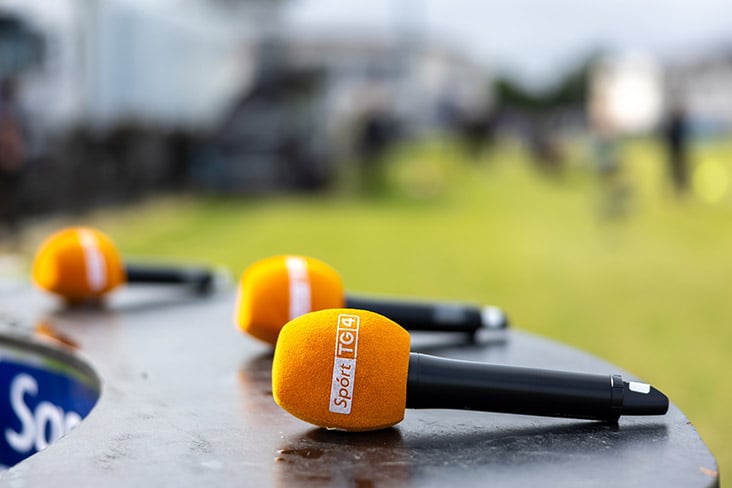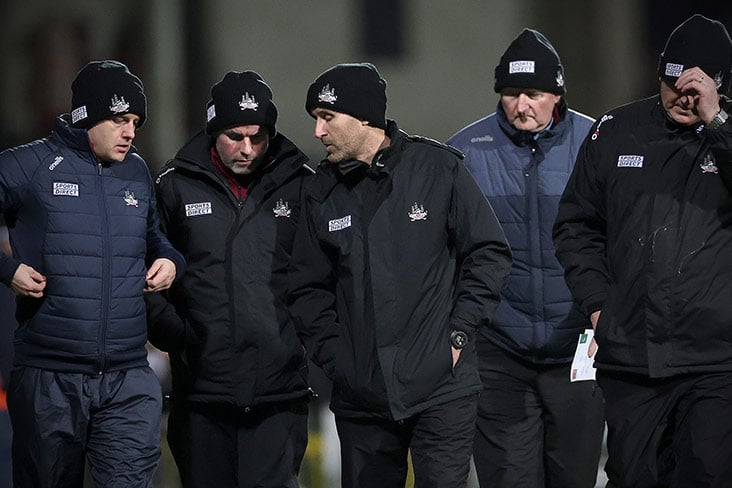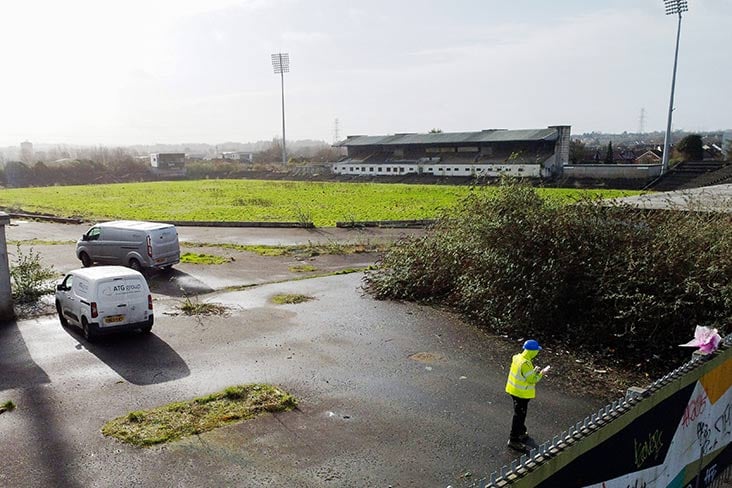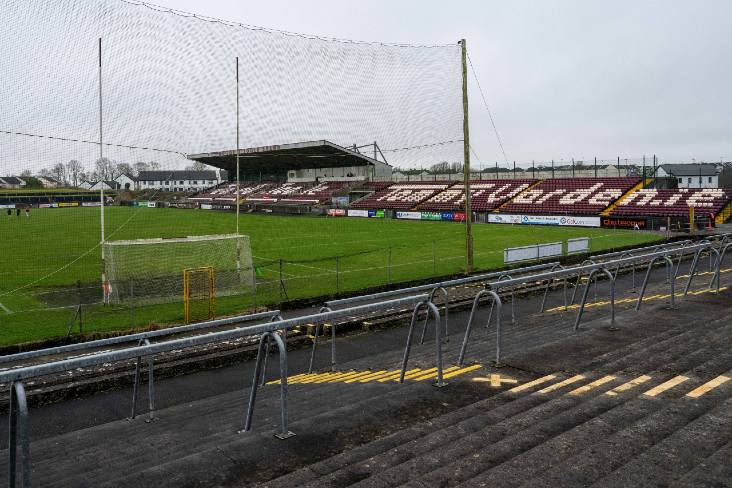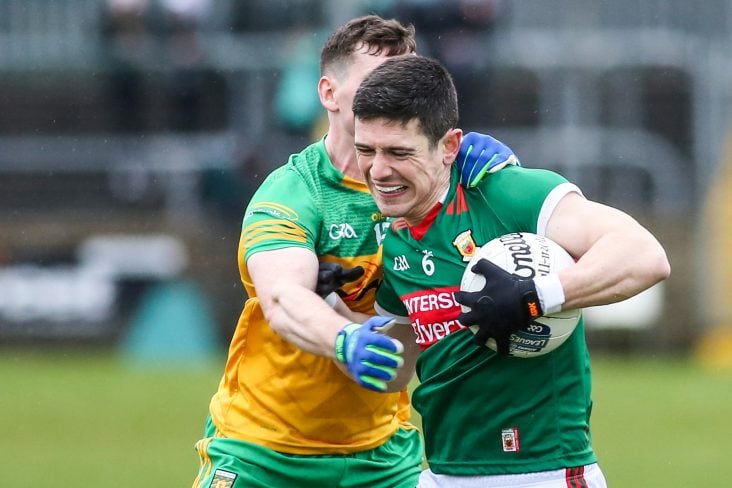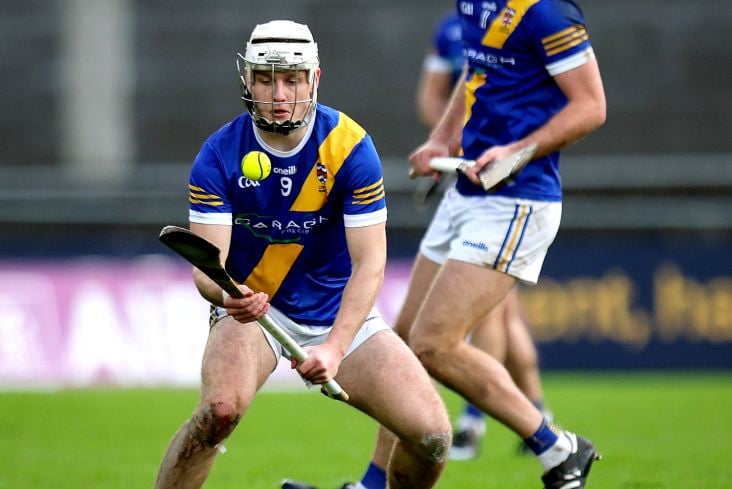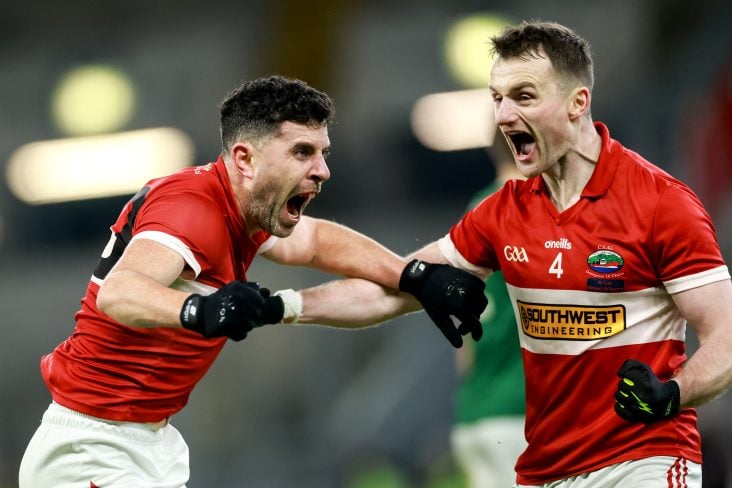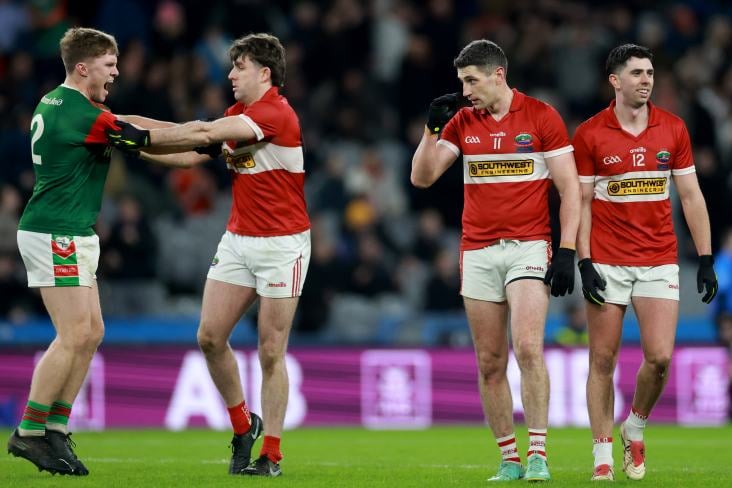Spitting and whistles should be banned and no handshakes, high fives or even fist bumps
June 13, 2020
Planning a safe return to sports involving children and adolescents up to 18 years old.
The HSE's Health Protection Surveillance Centre (HPSC) have issued a new guidance document for a safe return to sports involving children and adolescents up to 18 years old.
In line with Government advice, the broad and detailed document suggests that instead of handshakes, high fives, fist bumps or hugs, coaches come up with ideas for non-contact celebrations as physical contact is discouraged.
Other recommendations include focussing on fitness and skills to avoid contact as much as possible, particularly for close contact sports such as GAA, organising players into small groups or pods with designated coaches and limiting the number of children sitting in dugouts.
Cloth face coverings should be worn by coaches, officials, parents, volunteers and spectators but are not recommended to be worn by children under 13 years.
Spitting should be banned as well as whistles while each participant must bring their own labelled water bottle for training and games.
If a child, parent, spectator or any members of their household is symptomatic, they should stay at home and supervisors should observe children for symptoms.
Additionally, spectators should be limited to one person per player, bring their own household members to training and games and not share transport or congregate at the venue.
HSE's Health Protection Surveillance Centre (HPSC) guidance document for the return to sports activities for children and adolescents up to 18 years old:
1. Summary
The purpose of this document is to outline both the necessary measures which should be taken prior tor return of children and adolescents (up to the age of 18 years) to play and sports activities in the community, such as organised sports and summer camps, as well as the ongoing measures which need to be taken to continue to reduce the risk of COVID-19. These measures are aimed at risk minimisation of COVID-19 amongst children and adolescents returning to sports activities, their families and the wider surrounding community, recognising the importance of those activities for health and wellbeing
Key points
• No person (child, parent, coach or spectator) should attend an event if unwell or any members of their household are unwell with symptoms consistent with COVID-19. Supervisors should observe children for symptoms and they should ask parents to declare that their children are symptom free.
• Social (Physical) distancing, hand hygiene and good respiratory etiquette should be observed by all (children, parents, coches and spectators).
• This guidance document should be read in conjunction with the Government Roadmap for the reopening of society as the different grades of activities will only be activated to correspond with national policy and it is for each organisation to determine how best to put into operation a safe return to sports activities in line with national policy.
• Designating COVID compliance officers is a good way to help with coordination of risk mitigation actions.
2. Risk assessment
In each event, an up to date risk assessment should be conducted to determine the risk level for COVID-19 transmission related to the particular activity or sport, and what additional measures are needed to reduce this risk.
Different activites and sports carry different degrees of risk related to the level of close contact involved. Team sports for example can largely be categorised into contact and non-contact sports, with contact sports carrying a higher risk of virus transmission:
• Contact sport is an activity, particularly a team activity, in which by participating you are coming into close contact with others as part of competing or taking part in that activity – for example, physical contact sport like rugby and sport where there is close contact like Gaelic football, hurling, camogie, football, basketball, hockey, swimming or a rowing crew.
Non contact sports – activities in which you can comfortably maintain a 2 metre distance from others while participating – for example running, tennis, cycling or golf.
The risk associated with each sport or activity also varies depending on the level at which you are playing the sport or conducting the activity.
The following grading system is an example of how to stratify the various levels of risk associated with different stages of sports or activities, but the timing of when they can be initiated needs ot be in line with the Government Road map and is for each sports organisation to determine how best this is to be operationalised
• Grade 1 – practicing sporting drills, skills and exercises at home with only family present
• Grade 2 – team or group based practice within your community practicing drills, skills etc, without physical contact between participants
• Grade 3 – competition within your team/activity group which involves physical contact such as a practice match during your weekly training involving only people from your own team
• Grade 4 – competition involving physical contact between different teams/groups from the same geographical area, for example from the same county
• Grade 5 - competition involving physical contact between different teams/groups from different geographical areas, for example different counties or provinces
Initial return to play should be a gradual process, where we move from current Grade 1 level activities to Grade 2 or 3, depending on the context. Factors such as the level of contact involved in the sport, the ability of the participants to maintain 2 metre social distancing rules and the individual risk level of the participants should all be taken into consideration. Children with disabilities should also be able to return to sport once they are able to adhere to the risk minimisation measures. If there are any concerns regarding a child’s susceptibility to COVID-19 due to an underlying illness, parents should discuss this with their medical practitioner.
The age of children is also an important factor, as very young children will be less understanding of social distancing and hygiene measures and therefore return to play or sports may be most appropriate at grade 1 or 2 level at maximum for very young children.
It is reassuring to note that while the evidence is limited, it appears that children are not substantially contributing to the spread of COVID-19 in their household or in schools. One study suggests that while there is high transmission of COVID-19 among adults aged 25 years or older, transmission is lower in younger people particularly in those under 14 years of age.1
3. Measures to reduce the risk of COVID-19
Going to and coming from the event
• No person (child, parent, coach or spectator) should attend an event if unwell or any members of their household are unwell with symptoms consistent with COVID-19.
• Households should bring their own household members to the event and not share transport to or from the venue. If the parent is staying at the event, they should not congregate at the venue.
• Encourage parents to have children wait in the car or outside the venue until just before the beginning of a practice, warm-up, or game, instead of congregating with other children prior to the start.
• Stagger arrival and drop-off times by groups to limit contact between children and parents as much as possible. For example, if there is a training session for an older age group after a younger training session, leave at least a 30 minutesbreak between the end of the 1st session and the start of the 2nd session. This also allows for time to clean and disinfect all frequently touched surfaces and equipment prior to the arrival of the next group.
• Notification of attendance to the COVID-19 compliance officer or event organiser ensures adequate facilities and staff for safer training. If there is a change in attendees circumstances, this needs to be notified to the event organiser in a timely way.
• Children should arrive, train and leave in their gear to avoid use of enclosed settings like changing rooms.
• Close shared spaces such as changing and locker rooms, if possible. If not possible, stagger use between different groups and clean and disinfect between use.
• A self-assessment of wellbeing of each attendee may be requested prior to commencement of training to ensure the wellbeing of children, staff and parents who attend the event.
Personal hygiene measures
• Everyone should be encouraged to cover their coughs and sneezes with a tissue or use the inside of their elbow. Used tissues should be thrown in a waste paper bin and the child should be reminded to wash their hands immediately with soap and warm water or hand sanitizer that contains at least 60% alcohol. This hand sanitizer should be readily available and easily accessible.
• Where possible, facilitate hand-washing with soap and water for at least 20 seconds for everyone on arrival and departure from the location where the activity is taking place, as a minimum. Support healthy hygiene by providing all supplies including soap, paper towels, tissues, and no-touch/foot pedal rubbish bins. If hand-washing facilities are not available, hand-sanitizer containing at least 60% alcohol should be used as an alternative. Regardless of availabily of hand-washing facilities, hand-sanitizer should be readily available to all children, parents and coaches, that can be used regularly after handling equipment, coughing or sneezing or having direct contact with others.
Children should be supervised when handwashing or using hand sanitizer
• Everyone should wash their hands before eating and should not share food or drinks.
• Avoid sharing of water-bottles. Each child should bring their own water-bottle clealy labelled with their name.
• Discourage sharing of items that are difficult to clean or disinfect. Don’t allow sharing of towels, clothing, or other items used to wipe faces or hands.
• Spitting should be strictly forbidden.
• Whistles should not be used at any time as alternative alert mechanisms can be used.
Face coverings
• Where physical distancing is not possible, cloth face coverings should be worn by coaches, officials, parents, volunteers and any other spectators present. Face coverings are not intended to protect the wearer, but rather to reduce the risk of spreading COVID-19 from the person wearing the mask (who may not have any symptoms of disease).
• Face coverings are not recommended to be worn by children under 13 years.
• Face coverings may also be challenging to wear while playing sport. Unless there is a safety concern however, children older than 13 years should be allowed to wear a face covering if they wish to.
• People wearing face coverings should be reminded to not touch the face covering and to wash their hands frequently. Information should be provided to all parents on the safe use of face coverings.
Social distancing measures
• As much as possible, try to maintain social distancing of 2 metres between children.
• Display physical guides, such as signs or markings on floors or pitches, to make sure that coaches and players are aware of the 2 metre distance that is required for social distancing.
• Discourage unnecessary physical contact, such as high fives, handshakes, fist bumps, or hugs.
Suggest alternative ways of celebration or greetings that don’t involve contact.
• For close contact sports, as much as possible avoid contact aspect of sport and instead focus on fitness and skills, which can allow maintenance of social distancing during practices.
• Organise players into small groups or pods with designated coaches, for example 2 coaches for every 10 participants, that remain together and work through stations, rather than switching groups or mixing groups. This way each child will have contact with only a portion of the group at each training session.
• Create distance between children when explaining drills or the rules of the game.
• Social distancing must be maintained when children are not playing for example if there is a match underway and some children are waiting on the sidelines as substitutes they should maintain social distance from one another. They can be encouraged to practice drills or exercises while waiting on the sidelines or if too young to maintain social distancing alone, they should be accompanied by an adult.
• The ability of children to socially distance will depend on their age. For young children, it may be necessary to ask parents to monitor their children to ensure that they maintain social distancing.
• Identify adult coaches or volunteers to help maintain social distancing among children, coaches, referees and spectators.
• Limit the number of children sitting in confined player seating areas (e.g., dugouts) by allowing players to spread out into spectator areas and along the sideline.
Cleaning and disinfection measures
• 1 staff member/coach should be designated in charge of cleaning and disinfecting of any shared equipment before, during and after all sessions/activities.
• Minimize equipment sharing, and clean and disinfect shared equipment between use by different people.
• Jerseys or bibs should not be swapped during a training session or game and should be washed at the highest temperature after every use.
• Develop a schedule for increased, routine cleaning and disinfection of all frequently touched surfaces.
• Ensure safe and correct use and storage of disinfectants, including storing products securely away from children.
• In addition to cleaning and disinfecting equipment, provide and encourage children to use hand-sanitizer to disinfect their hands after playing contact sports or activities or using any shared equipment.
• Use gloves when removing rubbish bags or handling and disposing of any rubbish and wash hands with soap and water for at least 20 seconds afterward.
Additional measures
• Designate a COVID-19 Compliance Officer who is the point of contact that all parents and children are aware of.
• Ensure adequate supplies of shared items (e.g., protective gear, balls). Alternatively, limit use of supplies or equipment to one group of players at a time and clean and disinfect between use.
• Where possible, for Items that may be difficult to decontaminate such as helmets, children must provide their own.
• Ensure that each child’s belongings are separated and in individually labeled containers or bags to avoid confusion between belongings and sharing of items.
• For sports involving large teams, consider decreasing the sizes of teams for matches.
• Spectators at sports events or activities should be limited to 1 person per player.
• Teams should avoid travel where possible and limit it to within their own area .
• Display awareness posters with messaging related to hand hygiene and cough etiquette at entrances and exits and in toilets.
A special note on boxing equipment (or similar equipment)
Ideally each child should have their own headgear and pair of boxing gloves. However recognising that this is not always feasible especially when pupils are trialling the sport for the first time, the following measures should be considered when reopening the sport among children:
• Before recommencing boxing, each club manager should examine the equipment they have in stock to determine whether the gloves are visibly soiled and smelly and whether the inner and outer lining is intact or needs to be replaced.
• Most boxing gloves made from artificial leather such as PU and Rexene can be machine-washed. In addition, gloves with the closed cell foam design can be washed in a machine. These gloves don't absorb water. They also dry well after washing. If the gloves cannot be satisfactorily cleaned/disinfected between use by different children, clubs should consider the practically of
children wearing a pair of disposable nitrile gloves with extended cuff inside the boxing gloves to limit the likelihood of the inner lining of the gloves becoming contaminated.
• If a child wears hand wraps, after use they should take them home and place the wraps in a laundry bag, wash them in your washing machine, and let them air dry. It is best to wash them after each use, and follow the instructions for the particular hand wraps that is worn.
• Headgear that is shared between pupils should be cleaned and disinfected between children using a detergent/disinfectant wipe.
• Each child should be aware that they should not share boxing equipment if they have broken skin, cuts or sores that cannot be completely covered with a waterproof dressing or an exfoliative skin condition such as eczema, psoriasis or contact dermatitis.
• Before using gloves or headgear each child must cover all cuts and sores with a waterproof dressing, they must clean their hands with soap and water or an alcohol based hand sanitizer before handling /putting on the boxing gloves and helmet.
4. Contact Tracing Measures
• A log of all children and spectators attending every session, with contact information for contact tracing purposes must be recorded to enable contact tracing, should it be required.
• This log should be electronic and should be completed in advance where possible.
• The designated COVID-19 Compliance Officer should ensure that the information recorded in advance on the log is accurate each day.
• There should be a system in place where this log is updated in real time for any necessary changes, for example if a child’s parent is unable to accompany them at short notice and they are accompanied by a different person, this should be updated on the online log in real time.
• This log should be readily and quickly accessible for contact tracing purposes.
5. Communication with parents and children
• Communicate all new measures and rules which will need to be implemented related to COVID-19 with parents in advance of resumption of any activities. Ensure that parents and children understand what measures are obligatory.
• Ensure that parents and children are fully aware of all symptoms of COVID-19. The most common signs and symptoms of COVID-19 are available on the HSE website.
• Ensure all parents understand the need to immediately self-isolate for 14 days and to phone their doctor in the event of onset of any COVID-19 signs or symptoms or to restrict their movement if they have had recent close contact with a suspect or confirmed COVID-19 case. Further information on when and how to self-isolate and restrict movement are also available on the HSE website.
6. How to manage a child, parent or spectator with COVID-19 symptoms
• Ideally the designated COVID-19 Compliance Officer should take charge of the management of any persons with COVID-19 symptoms.
• Immediately separate any child or other person displaying or complaining of COVID-19 related symptoms from other children, parents and spectators.
• Ask this person to wear a face covering if possible or if available provide them with a facemask.
• The designated person managing the situation should try to maintain at least 2 metres from the person with symptoms and should wear a face covering and wash their hands regularly.
• Provide the ill person with tissues and hand sanitizer and ensure that all tissues are disposed of in a waste bag that can be tied and marked as separate from other waste.
• If they are well enough to go home, arrange for them to be transported home by a family member, as soon as possible and advise them to inform their general practitioner by phone of their symptoms.
• If they are too unwell to go home or advice is required, contact 999 or 112 and inform them that the
sick person is a COVID-19 suspect.
• All persons who have been in close contact with the suspect case will need to be informed to restrict their movement for 14 days or until further information is available (i.e. a negative test result of the suspect case).
Tweet
